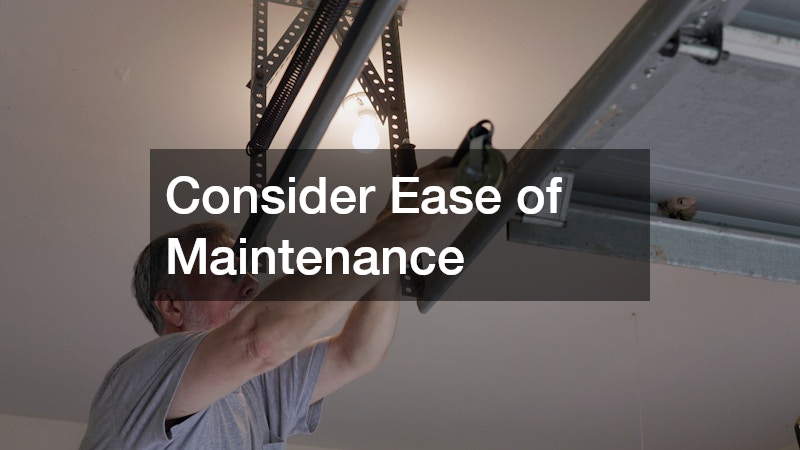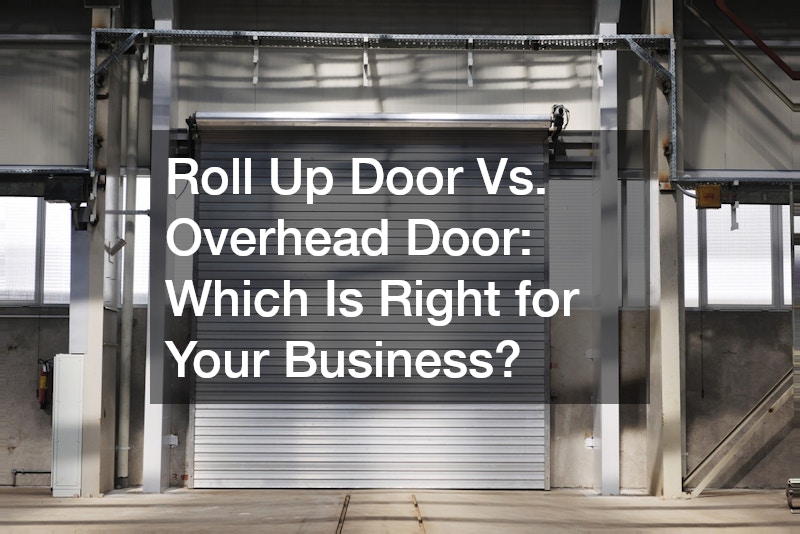
When it comes to securing and accessing commercial facilities, choosing the right type of door can have a significant impact on functionality, safety, and efficiency. Two of the most common options for commercial and industrial properties are roll up doors and overhead doors. Each type offers distinct advantages depending on the needs of your space, usage frequency, and available clearance.
In this article, we’ll break down the key differences between roll up and overhead doors and help you determine which one best suits your commercial application. Whether you’re outfitting a warehouse, auto shop, storage facility, or loading dock, understanding these door types is crucial.
Understand How Each Door Operates
Before comparing the benefits, it’s essential to understand how each door functions.
Roll Up Doors:
Roll up doors consist of narrow horizontal slats made of steel or aluminum that roll tightly into a coil above the opening. These doors are typically mounted inside the opening and require very little overhead space. They operate by rolling vertically into a compact barrel above the doorway, making them an ideal choice for environments where ceiling space is limited or obstructed by lighting, ducts, or equipment.
Overhead Doors:
Overhead doors are made of larger panels that are hinged together. When opened, the panels glide along a track system and rest parallel to the ceiling. They are typically mounted on the interior and use torsion springs to assist with lifting and lowering. Overhead doors require more ceiling clearance than roll up doors and are commonly found in garages, warehouses, and distribution centers.
Evaluate Space Requirements
One of the primary considerations when choosing between roll up and overhead doors is how much space you have available—both overhead and around the opening.
Roll up doors are excellent for facilities with limited interior clearance. Because the slats roll into a compact coil above the doorway, they do not occupy ceiling space. This can be especially useful in facilities that use overhead cranes, high shelving, or suspended HVAC units.
On the other hand, overhead doors glide into the ceiling area and may obstruct lights or ventilation. If your commercial building has high ceilings with no interference, an overhead door could be a suitable fit. However, they are not ideal in tight spaces where the horizontal tracks could interfere with internal systems.
Compare Durability and Security
Both types of doors are designed to withstand commercial wear and tear, but the level of durability can vary based on material and design.
Roll up doors are typically constructed from interlocking steel or aluminum slats, offering excellent durability and resistance to impact, corrosion, and harsh weather. They are commonly used in high-security settings like storage facilities and warehouses where robustness is a priority.
Overhead doors are also strong and reliable but are more likely to suffer panel damage if struck by forklifts or vehicles. While modern commercial overhead doors offer improved security features, roll up doors still hold the advantage in high-risk environments due to their tight closure and reduced number of moving parts.
Consider Ease of Maintenance
Maintenance requirements differ between the two systems. Roll up doors generally have fewer moving components, which translates to less frequent repairs. Their compact design also limits exposure to dust and debris, which can enhance longevity.
Overhead doors, with their tracks, springs, rollers, and panel joints, require regular inspection and lubrication. Misalignment or worn springs can lead to malfunction, making proactive maintenance more critical.
In high-traffic facilities, minimizing downtime is crucial, which makes roll up doors an attractive option for businesses that need reliable, low-maintenance solutions.
Examine Insulation and Weather Sealing
Climate control and energy efficiency are essential considerations for many commercial properties. Both door types can be fitted with insulation and weather seals, but the effectiveness can vary.
Roll up doors with insulated slats provide strong thermal performance and can be equipped with tight seals to prevent drafts, moisture, and pests. This makes them a popular choice for temperature-sensitive environments such as food storage or pharmaceutical facilities.
Overhead doors can also be insulated with polyurethane or polystyrene materials, offering good R-values and energy efficiency. However, due to the panel connections, there may be more points for air leakage if the door is not properly maintained.
Match the Door to the Application
Your specific commercial needs should ultimately drive the decision between roll up and overhead doors.
-
Roll Up Doors Are Ideal For:
-
Warehouses with limited ceiling clearance
-
High-security storage facilities
-
Buildings with heavy-duty industrial operations
-
Environments where cleanliness and low maintenance are priorities
-
-
Overhead Doors Are Ideal For:
-
Auto shops or fire stations that benefit from full ceiling clearance
-
Facilities with wide loading bays
-
Commercial spaces that require large, clear openings
-
Locations with adequate space for tracks and opener systems
-
Both door types serve important functions in commercial and industrial applications. The best choice depends on how the space is used and what features are most important to your operation—whether that’s durability, accessibility, insulation, or minimal maintenance.
When selecting doors for your facility, don’t just consider appearance or familiarity—take the time to evaluate space, performance, and long-term usability. Roll up doors offer compact design and superior durability, while overhead doors provide easy access and traditional functionality.
No matter your choice, investing in quality commercial overhead doors tailored to your space and business needs will help protect your property, improve workflow, and enhance day-to-day operations.



